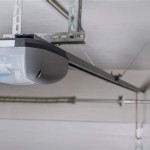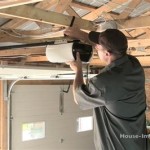Automatic Garage Door Installation Cost: A Comprehensive Guide
The installation of an automatic garage door is a significant home improvement project that offers convenience, security, and potentially increased property value. Understanding the costs associated with this project is crucial for effective budgeting and informed decision-making. This article provides a detailed breakdown of the factors influencing the cost of automatic garage door installation, including the door itself, the opener, labor, and potential additional expenses.
Initial considerations should include the existing garage structure and its compatibility with an automatic door. Older garages, for example, may require structural modifications to properly accommodate the new door and opener. These modifications can add significantly to the overall project cost. Furthermore, the homeowner's specific needs and preferences will play a role in determining the type of door and opener selected, which directly impacts the budget.
Factors Influencing the Cost of the Garage Door Itself
The primary component influencing the automatic garage door installation cost is the garage door itself. Several factors contribute to the price of the door, including material, size, style, and insulation. Different materials offer varying levels of durability, aesthetics, and insulation, leading to a wide range of price points.
Material: Steel doors are generally the most affordable option, offering a good balance of durability and cost-effectiveness. They are available in various gauges, with thicker steel providing greater resistance to dents and damage. Aluminum doors are lightweight and corrosion-resistant, making them suitable for coastal climates. However, they are typically more expensive than steel and may be more susceptible to dents. Wood doors offer a classic and elegant look but require more maintenance, such as painting or staining, to prevent rot and warping. They also tend to be the most expensive option. Composite doors, made from a combination of materials like wood fibers and resin, offer the aesthetic appeal of wood with improved durability and resistance to the elements. Their price point typically falls between steel and wood doors. Finally, glass doors, often framed with aluminum, provide a modern aesthetic and allow natural light into the garage. They can be expensive, especially if opting for tempered or insulated glass.
Size: Standard single-car garage doors are typically 8 to 10 feet wide, while double-car doors range from 16 to 18 feet wide. Larger doors naturally require more materials and labor for installation, resulting in a higher price. Custom-sized doors, designed to fit non-standard garage openings, will further increase the cost.
Style: Garage doors are available in a variety of styles, including traditional raised-panel, carriage-house, modern flush-panel, and custom designs. More intricate designs and custom features, such as decorative hardware or windows, will increase the price of the door. The complexity of the installation can also be affected by the chosen style, potentially influencing labor costs.
Insulation: Insulated garage doors offer energy efficiency by reducing heat transfer into and out of the garage. This can help to lower heating and cooling costs, particularly for garages that are attached to the house or used as living spaces. Insulation is typically measured in R-value, with higher R-values indicating greater insulation. Insulated doors are more expensive than non-insulated doors, but the long-term energy savings may offset the initial cost. There are typically three types of insulation: polystyrene, polyurethane, and multi-layer. Polystyrene is the most cost-effective, but polyurethane offers higher R-value per inch of thickness.
Understanding Garage Door Opener Costs
The garage door opener is another significant component of the overall installation cost. Different types of openers utilize varying mechanisms and offer different features, impacting their price.
Drive Type: There are several types of garage door openers, each with its own advantages and disadvantages. Chain-drive openers are the most common and generally the most affordable. They are reliable and durable but can be noisy. Belt-drive openers use a rubber belt instead of a chain, resulting in quieter operation. Screw-drive openers utilize a threaded steel rod to move the door, offering a good balance of speed and reliability. Direct-drive openers attach directly to the torsion bar, eliminating the need for a chain or belt and providing exceptionally quiet operation. Jackshaft openers mount on the wall beside the garage door rather than on the ceiling, freeing up overhead space and are often used in garages with high ceilings or limited headroom. The choice of drive type impacts both the upfront cost and long-term maintenance requirements.
Horsepower: Garage door openers are rated by horsepower (HP), which indicates their lifting capacity. Openers with higher horsepower are necessary for heavier doors, such as those made of wood or insulated steel. A 1/2 HP opener is typically sufficient for standard single-car garage doors, while a 3/4 HP opener is recommended for heavier doors or double-car garages. Using an underpowered opener can lead to premature failure and increased maintenance costs.
Features: Modern garage door openers offer a range of features, such as remote controls, keypads, safety sensors, battery backup, and smart home integration. Safety sensors, which prevent the door from closing if an obstruction is detected, are a standard safety feature. Battery backup ensures that the opener will function during a power outage. Smart home integration allows you to control the door remotely using a smartphone or other connected device. The inclusion of these features will increase the cost of the opener.
Labor Costs and Additional Considerations
Labor costs are a significant component of the automatic garage door installation cost. These costs can vary depending on the complexity of the installation, the location of the property, and the specific contractor chosen. It is important to obtain multiple quotes from qualified and licensed contractors to ensure a competitive price. The labor rate generally covers the removal of the old door and opener (if applicable), the installation of the new door and opener, and the necessary wiring and adjustments.
Removal and Disposal: The removal and disposal of the old garage door and opener can add to the overall cost. Some contractors include this service in their installation fee, while others charge a separate fee. The disposal fee may vary depending on the size and weight of the old door and the local recycling or landfill regulations.
Structural Modifications: As mentioned earlier, structural modifications to the garage opening may be necessary to accommodate the new door. This could involve reinforcing the door frame, adding supports, or adjusting the header height. These modifications can significantly increase the overall cost of the project and require the expertise of a skilled contractor.
Electrical Work: The installation of an automatic garage door opener requires a dedicated electrical circuit. If an outlet is not already available near the opener, a qualified electrician will need to install one. This can add to the overall cost of the project, particularly if extensive wiring is required.
Permits and Inspections: Depending on local regulations, a building permit may be required for garage door installation. The cost of the permit can vary depending on the jurisdiction. Additionally, an inspection may be required to ensure that the installation meets local building codes. The contractor should be familiar with the local permitting and inspection requirements and can assist with obtaining the necessary approvals.
Warranty and Maintenance: The garage door and opener typically come with a manufacturer's warranty, which covers defects in materials and workmanship. It's essential to understand the terms and conditions of the warranty before making a purchase. Regular maintenance, such as lubricating moving parts and inspecting the safety features, is necessary to ensure the longevity and proper functioning of the garage door system. While not directly included in the initial installation cost, budgeting for future maintenance is a prudent financial decision.
The overall cost of automatic garage door installation is influenced by a combination of factors, including the type of door and opener selected, the complexity of the installation, and the location of the property. Thorough research, careful planning, and obtaining multiple quotes from qualified contractors are essential steps in ensuring a successful and cost-effective project.

Cost To Install A Garage Door S Installed Fixr

Cost To Install A Garage Door S Installed Fixr

Cost Of Automatic Garage Door Installation In Los Angeles

Cost To Install A Garage Door S Installed Fixr

How Much Does Automatic Garage Door Installation Cost

Cost To Install A Garage Door S Installed Fixr

How Much Does A Garage Door Replacement Cost 2025 Guide

Cost To Install A Garage Door S Installed Fixr

How Much Does A Garage Door Replacement Cost 2025 Guide

How Much Does A Garage Door Opener Installation Cost 2025
Related Posts








